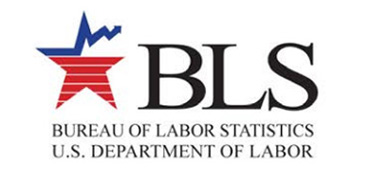Construction employment rises again; Fed, IHS surveys find worker-shortage worries Editor’s note: Construction Citizen is proud to partner with AGC America to bring you AGC Chief Economist Ken Simonson's Data DIGest. Check back each week to get Ken's expert analysis of what's happening in our industry.
Editor’s note: Construction Citizen is proud to partner with AGC America to bring you AGC Chief Economist Ken Simonson's Data DIGest. Check back each week to get Ken's expert analysis of what's happening in our industry.
Nonfarm payroll employment increased by 203,000, seasonally adjusted, in November and 2,293,000 (1.7%) over 12 months, the Bureau of Labor Statistics (BLS) reported on Friday. Construction employment rose for the sixth straight month, to a 51-month high of 5,851,000, up 17,000 from October and up 178,000 (3.1%) over the past year. Total hours worked (aggregate weekly hours) in construction since November 2012 increased by slightly more (3.4% ), implying that contractors are no longer extending hours per worker as much as they had earlier in the year. Residential construction employment (residential building and specialty trade contractors) climbed by 8,400 for the month and 102,500 (5.0%) for the year. Nonresidential employment (building, specialty trades, and heavy and civil engineering construction) rose by 7,900 and 75,000 (2.1%), respectively. The unemployment rate for jobseekers who last worked in construction fell to the lowest November level in six years—8.6%, down from 12.2% in November 2012 and 18.8% in November 2010. (Industry unemployment data are not seasonally adjusted and should only be compared year-over-year, not across months.) Since November 2010 the number of unemployed construction workers has dropped by 890,000, not seasonally adjusted. But construction employment rose by only 327,000, implying that many experienced workers left the industry for employment elsewhere, further training or schooling, retirement, or left the workforce. These departures may make it hard for contractors to find skilled workers if demand rises further, even though the unemployment rate remains higher than for the overall economy (7.4%, not seasonally adjusted), and wage growth and job openings do not yet signal any tightness nationally.
Informal soundings of businesses in the 12 Federal Reserve districts “indicated that the economy continued to expand at a modest to moderate pace from early October through mid-November,” the Fed reported on Wednesday in the latest Beige Book, so named for the color of its cover. “Boston, New York, Philadelphia, Cleveland, Richmond and Chicago indicated that multifamily construction continued to experience moderate to strong growth, with strength concentrated in the apartment segment. Commercial real estate activity remained stable or improved slightly across many districts. Philadelphia, Cleveland, Richmond, Chicago, St. Louis and Minneapolis all saw gains in industrial construction, while Boston, Chicago and St. Louis cited a rise in hotel construction. The technology sector drove demand for commercial real estate in the San Francisco district, and Cleveland saw gains in affordable housing and shale-gas-related activity. The outlook of market participants is for continued improvement in the Philadelphia, Atlanta, Kansas City and Dallas districts, while contacts were cautiously optimistic in Boston and Cleveland....Commercial real estate lending increased in New York, Cleveland, Atlanta, Chicago, Kansas City and San Francisco….Industries that reported moderate employment growth included construction, software and IT services, manufacturing and healthcare….In Philadelphia, a builder reported that contractors are reluctant to hire workers who require training. Instead, contractors are aggressively hiring skilled labor from each other….Builders in the [Kansas City, San Francisco,] Philadelphia and Cleveland districts cited a scarcity of high-skilled trade workers. As a result, there is upward pressure on wages, and subcontractors are demanding and getting higher rates….The Cleveland, Kansas City and San Francisco districts also commented that prices for residential construction materials, such as lumber and drywall, continued to rise, but the Cleveland district noted that the rate of increase has recently slowed.”
"Current construction costs rose for the 22nd consecutive month in November,” consultancy IHS reported on November 26 in releasing its IHS/Procurement Executives Group Engineering and Construction Cost Index. The index is based on responses from 19 “procurement executives representing leading engineering, procurement and construction firms” as to whether several types of material, equipment and subcontractor labor costs rose, fell or were flat in the prior month. Values above 50 indicate more respondents reported rising than falling prices. The index “registered 53.2% in November, up from 52.6% last month. Once again, the materials/equipment sub-index was the softer of the two subcomponents. Current materials/equipment prices registered 51.0% in November, the same as its October reading. The headline current materials/equipment price index has been hovering right around a breakeven 50 since April, with five of twelve subcomponents now below this neutral mark. November recorded the seventh consecutive month of falling prices for carbon steel pipe and a fourth month of falling freight rates between Asia and the US. Copper-based wire and cable and fabricated structural steel were also below [50] in November, indicating falling prices. The current subcontractor labor index registered 58.5%, up from 56.4% last month, with the strongest gains in November concentrated in Western Canada and the US South and West regions. In the open-ended response section, respondents also expressed concern over the availability of skilled labor (such as welders and pipefitters) in the US Gulf Coast as investment in downstream energy projects picks up in 2014.”
The Data DIGest is a weekly summary of economic news; items most relevant to construction are in italics. All rights reserved. Sign up at www.agc.org/datadigest.
AGC's Data DIGest: December 3 - 6, 2013
by Ken Simonson | December 06, 2013



Add new comment